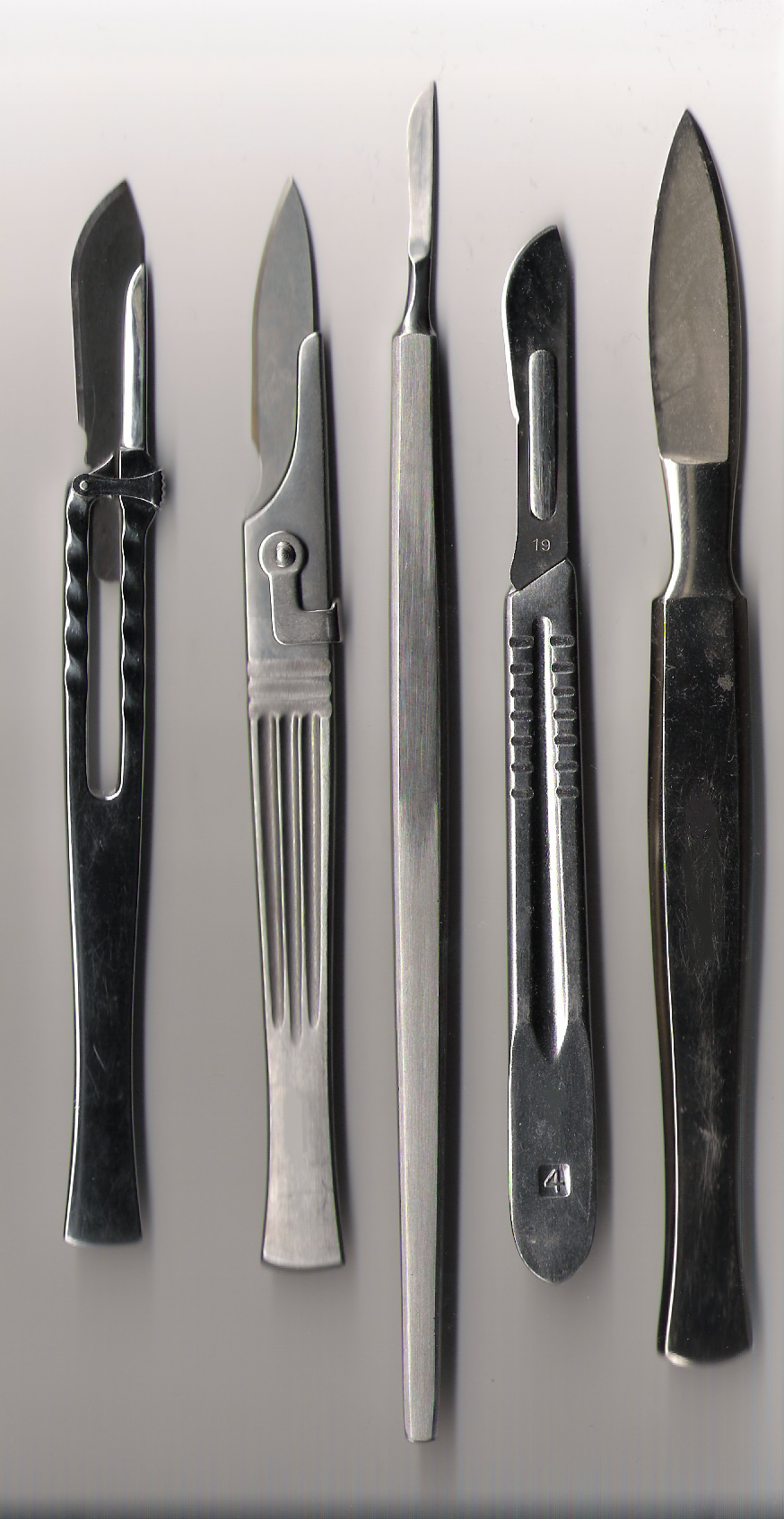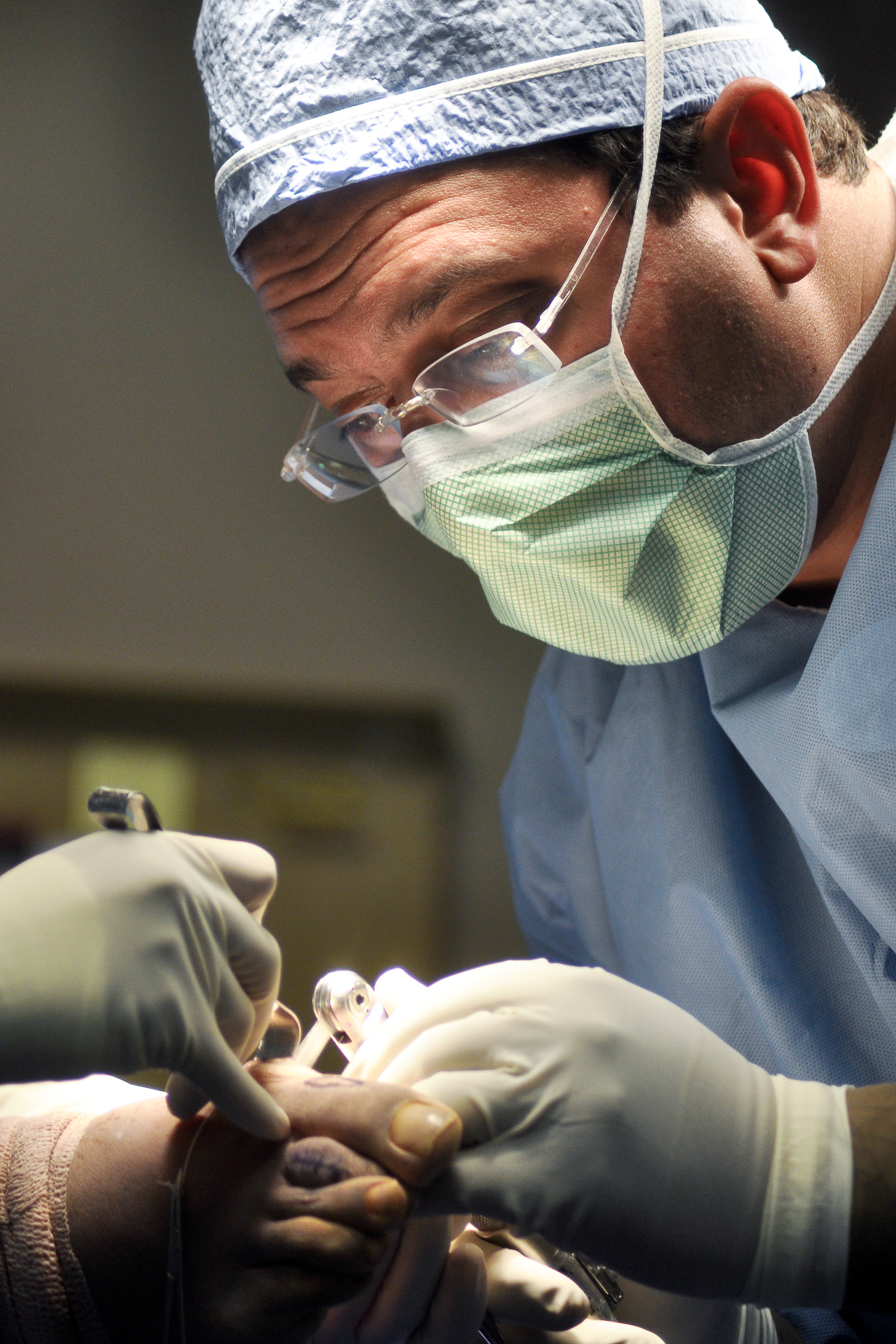|
Rongeur
A rongeur is heavy-duty surgical instrument with a sharp-edged, scoop-shaped tip, used for gouging out bone. Rongeur is a French language, French word meaning rodent or 'gnawer'. A rongeur can be used to open a window in bone, often in the skull, in order to access tissue underneath. They are used in neurosurgery, podiatric surgery, maxillofacial surgery, and orthopedic surgery to expose areas for operation.Frank Vertosick, Vertosick, Frank Jr. ''When the Air Hits Your Brain.'' New York: Fawcett Books 1996. Library of Congress Catalog Number: 96-91010 A rongeur is used in oral maxillofacial surgery to remove bony fragments or soft tissue. It is also used in hand surgery to cut traumatic amputated bone to allow skin to be closed over the defect. A rongeur can also be used in cadaver dissection lab to break through ribs when removing the anterior chest wall. A common example of a surgical rongeur is the Kerrison rongeur, in which its first design was created by Dr. Robert Masters ... [...More Info...] [...Related Items...] OR: [Wikipedia] [Google] [Baidu] |
Surgical Instrument
A surgical instrument is a medical device for performing specific actions or carrying out desired effects during a surgery or operation, such as modifying biological tissue, or to provide access for viewing it. Over time, many different kinds of surgical instruments and tools have been invented. Some surgical instruments are designed for general use in all sorts of surgeries, while others are designed for only certain specialties or specific procedures. Classification of surgical instruments helps surgeons to understand the functions and purposes of the instruments. With the goal of optimizing surgical results and performing more difficult operations, more instruments continue to be invented in the modern era. History Many different kinds of surgical instruments and tools have been invented and some have been repurposed as medical knowledge and surgical practices have developed. As surgery practice diversified, some tools are advanced for higher accuracy and stability while so ... [...More Info...] [...Related Items...] OR: [Wikipedia] [Google] [Baidu] |
Neurosurgery
Neurosurgery or neurological surgery, known in common parlance as brain surgery, is the specialty (medicine), medical specialty that focuses on the surgical treatment or rehabilitation of disorders which affect any portion of the nervous system including the Human brain, brain, spinal cord, peripheral nervous system, and cerebrovascular system. Neurosurgery as a medical specialty also includes non-surgical management of some neurological conditions. Education and context In different countries, there are different requirements for an individual to legally practice neurosurgery, and there are varying methods through which they must be educated. In most countries, neurosurgeon training requires a minimum period of seven years after graduating from medical school. United Kingdom In the United Kingdom, students must gain entry into medical school. The MBBS qualification (Bachelor of Medicine, Bachelor of Surgery) takes four to six years depending on the student's route. The newly qu ... [...More Info...] [...Related Items...] OR: [Wikipedia] [Google] [Baidu] |
Bone
A bone is a rigid organ that constitutes part of the skeleton in most vertebrate animals. Bones protect the various other organs of the body, produce red and white blood cells, store minerals, provide structure and support for the body, and enable mobility. Bones come in a variety of shapes and sizes and have complex internal and external structures. They are lightweight yet strong and hard and serve multiple functions. Bone tissue (osseous tissue), which is also called bone in the uncountable sense of that word, is hard tissue, a type of specialised connective tissue. It has a honeycomb-like matrix internally, which helps to give the bone rigidity. Bone tissue is made up of different types of bone cells. Osteoblasts and osteocytes are involved in the formation and mineralisation of bone; osteoclasts are involved in the resorption of bone tissue. Modified (flattened) osteoblasts become the lining cells that form a protective layer on the bone surface. The mine ... [...More Info...] [...Related Items...] OR: [Wikipedia] [Google] [Baidu] |
French Language
French ( or ) is a Romance languages, Romance language of the Indo-European languages, Indo-European family. Like all other Romance languages, it descended from the Vulgar Latin of the Roman Empire. French evolved from Northern Old Gallo-Romance, a descendant of the Latin spoken in Northern Gaul. Its closest relatives are the other langues d'oïl—languages historically spoken in northern France and in southern Belgium, which French (Francien language, Francien) largely supplanted. It was also substratum (linguistics), influenced by native Celtic languages of Northern Roman Gaul and by the Germanic languages, Germanic Frankish language of the post-Roman Franks, Frankish invaders. As a result of French and Belgian colonialism from the 16th century onward, it was introduced to new territories in the Americas, Africa, and Asia, and numerous French-based creole languages, most notably Haitian Creole, were established. A French-speaking person or nation may be referred to as Fra ... [...More Info...] [...Related Items...] OR: [Wikipedia] [Google] [Baidu] |
Podiatric Surgery
Podiatry ( ), also know as podiatric medicine and surgery ( ), is a branch of medicine devoted to the study, diagnosis, and treatment of disorders of the foot, ankle and lower limb. The healthcare professional is known as a podiatrist. The US podiatric medical school curriculum includes lower extremity anatomy, general human anatomy, physiology, general medicine, physical assessment, biochemistry, neurobiology, pathophysiology, genetics and embryology, microbiology, histology, pharmacology, women's health, physical rehabilitation, sports medicine, research, ethics and jurisprudence, biomechanics, general principles of orthopedic surgery, plastic surgery, and foot and ankle surgery. Podiatry is practiced as a specialty in many countries. In Australia, graduates of recognised academic programs can register through the Podiatry Board of Australia as a "podiatrist", and those with additional recognised training may also receive endorsement to prescribe or administer restricted m ... [...More Info...] [...Related Items...] OR: [Wikipedia] [Google] [Baidu] |
Maxillofacial Surgery
Oral and maxillofacial surgery (OMFS) is a surgical specialty focusing on reconstructive surgery of the face, facial trauma surgery, the mouth, head and neck, and jaws, as well as facial plastic surgery including cleft lip and cleft palate surgery. Specialty An oral and maxillofacial surgeon is a specialist surgeon who treats the entire craniomaxillofacial complex: anatomical area of the mouth, jaws, face, and skull, head and neck as well as associated structures. Depending upon the national jurisdiction, oral and maxillofacial surgery may require a degree in medicine, dentistry or both. United States In the U.S., oral and maxillofacial surgeons, whether possessing a single or dual degree, may further specialise after residency, undergoing additional one or two year sub-specialty oral and maxillofacial surgery fellowship training in the following areas: * Cosmetic facial surgery, including eyelid (blepharoplasty), nose (rhinoplasty), facial lift, brow lift, and laser ... [...More Info...] [...Related Items...] OR: [Wikipedia] [Google] [Baidu] |
Orthopedic Surgery
Orthopedic surgery or orthopedics ( alternative spelling orthopaedics) is the branch of surgery concerned with conditions involving the musculoskeletal system. Orthopedic surgeons use both surgical and nonsurgical means to treat musculoskeletal trauma, spine diseases, sports injuries, degenerative diseases, infections, tumors and congenital disorders. Etymology Nicholas Andry coined the word in French as ', derived from the Ancient Greek words ("correct", "straight") and ("child"), and published ''Orthopedie'' (translated as ''Orthopædia: Or the Art of Correcting and Preventing Deformities in Children'') in 1741. The word was assimilated into English as ''orthopædics''; the ligature ''æ'' was common in that era for ''ae'' in Greek- and Latin-based words. As the name implies, the discipline was initially developed with attention to children, but the correction of spinal and bone deformities in all stages of life eventually became the cornerstone of orthopedic pra ... [...More Info...] [...Related Items...] OR: [Wikipedia] [Google] [Baidu] |
Frank Vertosick
Frank Vertosick, Jr. is an American neurosurgeon. He is best known as the author of the book ''When the Air Hits Your Brain: Tales of Neurosurgery'', which chronicles his neurosurgical residency training. He also authored ''Why We Hurt: The Natural History of Pain'' (2000) and ''The Genius Within: Discovering the Intelligence of Every Living Thing'' (2002). Born in 1955 in Harwick, Pennsylvania, Vertosick attended the University of Pittsburgh where he majored in physics before entering the University of Pittsburgh School of Medicine. He stayed at the University of Pittsburgh for his residency training in neurosurgery.Weisberg, Deborah"A Warrior Against Pain" ''Pittsburgh Post-Gazette'', Pittsburgh, 7 November 2000. Retrieved on 23 December 2011. After residency, he served as the Associate Chief of Neurosurgery and Associate Director for Neuro-Oncology at Western Pennsylvania Hospital in Pittsburgh. He retired from surgery due to Parkinson's disease in 2002, but still treats office ... [...More Info...] [...Related Items...] OR: [Wikipedia] [Google] [Baidu] |
Instruments Used In General Surgery
There are many different Surgery, surgical specialties, some of which require specific kinds of Surgical instrument, surgical instruments to perform. General surgery is a specialty focused on the abdomen; the Thyroid, thyroid gland; Disease, diseases involving skin, Breast, breasts, and various Soft tissue, soft tissues; Trauma surgery, trauma; Peripheral artery disease, peripheral vascular disease; Hernia, hernias; and Endoscopy, endoscopic procedures. Instruments can be classified in many ways, but, broadly speaking, there are five kinds of instruments. # Cutting and dissecting instruments # Grasping or holding instruments # Hemostasis, Hemostatic instruments # Retractor (medicine), Retractors # Tissue unifying instruments and materials Instruments used in surgery are: References Medical lists, Surgical instruments Technology-related lists, Surgical instruments Surgical instruments, Surgical instruments {{DEFAULTSORT:Instruments used in Surgery ... [...More Info...] [...Related Items...] OR: [Wikipedia] [Google] [Baidu] |






